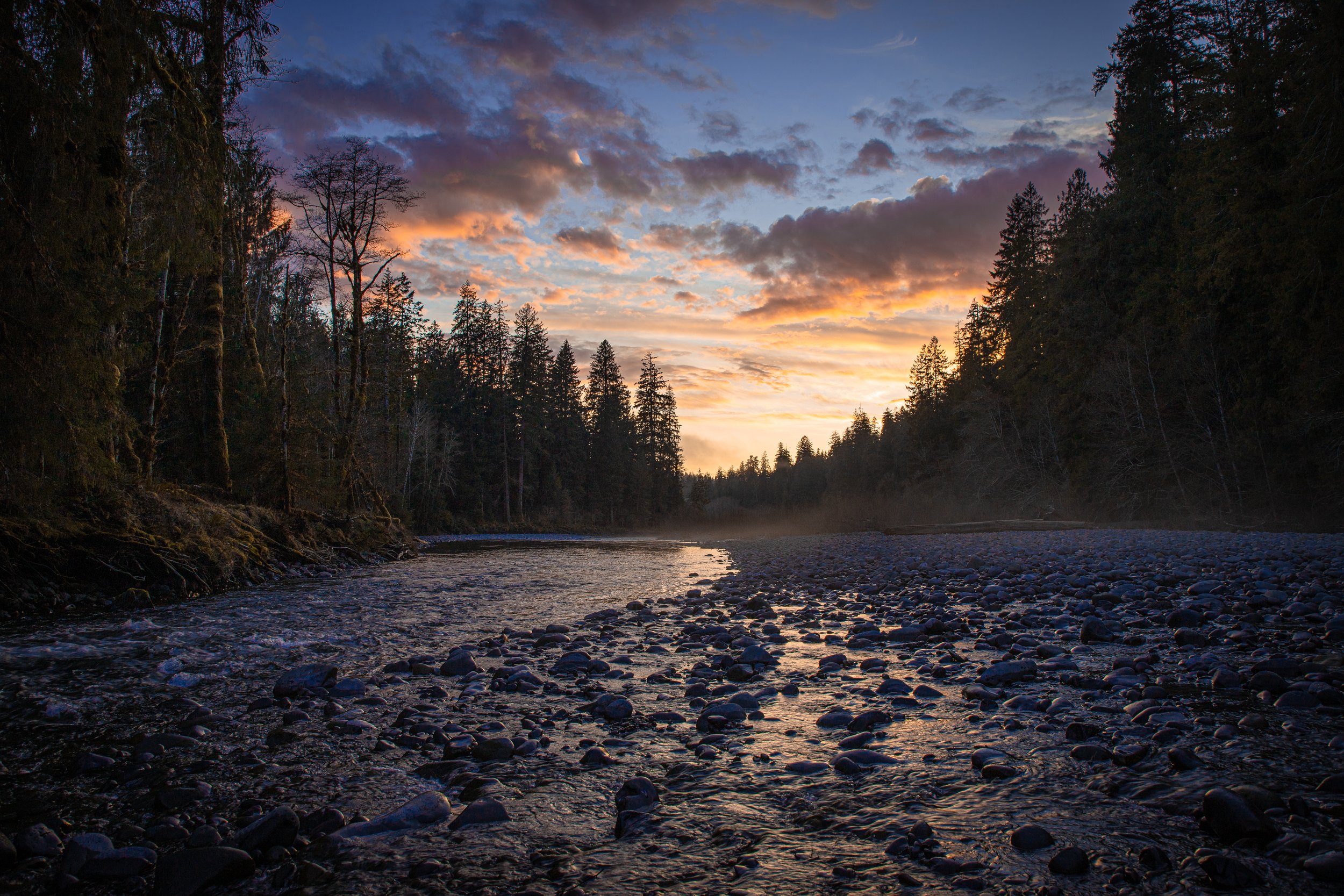Olympic Rain Forest
Photo: Bryant Carlin
In May 2015, I did something I swore I’d never do: go backcountry camping.
And I didn’t do it once. I ventured deep into the Olympic temperate rain forest six times, the last on a solo journey. The experience changed me — and it also scared the bejeezus out of me.
Over the last couple years, I’ve written a few articles about those excursions. I’ve done a radio feature. And I’m working on a book.
While I was there, I took lots of photos and videos. You’ll find some here, along with the articles. You’ll also learn about the person who invited me into the woods, a man named Bryant Carlin, someone who, at the time, I barely knew. But one of the best ways to learn about someone is to head into the woods with them.
Of course, that’s also a good way to learn about yourself.

“… The sky, the river, the nurse logs, and Douglas squirrels: They might as well have been invisible. All I saw was danger. …”
Photo: Bryant Carlin
I was terrified to head into the backcountry.
Bryant Carlin couldn’t wait. Over the course of our five wilderness journeys together, I saw a lot of beautiful things—and I witnessed a few things that broke my heart.
I describe it all in a 2020 radio feature on KNKX, a local NPR affiliate.
Photo: Bryant Carlin

Lost and Found
On my first trip deep into the Olympic rain forest, I wasn’t sure I’d make it back alive. But the beauty of the Bogachiel River helped me find direction.
Photo: Bryant Carlin
The Olympic rain forest is a temperate rain forest, which means many things. But in essence:
It’s home to a robust network of water, a realm of rivers, streams, rain and fog
It nurtures countless mosses and epiphytes, plants that grow on other plants
Temperate rain forests are the most biologically productive terrestrial ecosystems on the planet
The Olympic temperate rain forest receives 12-14 feet of rain a year: It’s the wettest place in the Lower 48.
The rain forest is comprised of four river valleys: (from north to south)
the Bogachiel; the Hoh; the Queets; the Quinault.
Photo: Rosette Royale
This is the Bogachiel River, in late spring.
Photo; Bryant Carlin
Our first trip was a nine-day trek up the Bogachiel River trail.
You might notice I look ambivalent in this photo. That’s because, while I was happy I’d made it two miles to reach the sign, Bryant wanted to go Flapjack, another eight miles up trail. But I knew that if you hike 10 miles into the woods, you have to hike 10 miles out. And what if something happened in between?
It was hard to feel secure, when I saw a lot of this:
Photo: Rosette Royale
The back of Bryant as he walked away. He kept a pace on the trail I couldn’t match, a tempo he picked up as a Marine Corps reservist.
When I wasn’t too busy fighting with uncomfortable backpack, I did my best to look at the world around me.
There was a lot to see.
Photo: Rosette Royale
A lake near Flapjack campground
Photo: Rosette Royale
A herd of Roosevelt elk
Photo: Bryant Carlin
A tree blanketed in moss, turned brown due to a drought.
On our last full day, Bryant said he thought there was a waterfall deep in the thick of the woods.
His clue? A trickle of water on the trail. I wasn’t convinced. Still, we plunged into the underbrush. We bushwhacked through a part of the rain forest that was so dangerous, it deserved yellow caution tape. I wanted to turn around. Bryant told me to listen. I could barely hear water. We kept on for another 20 minutes, the sound growing louder until we reached this.
This waterfall was close to a mile off the trail. It’s not on any map. I called it Eden Falls.
Video: Rosette Royale







